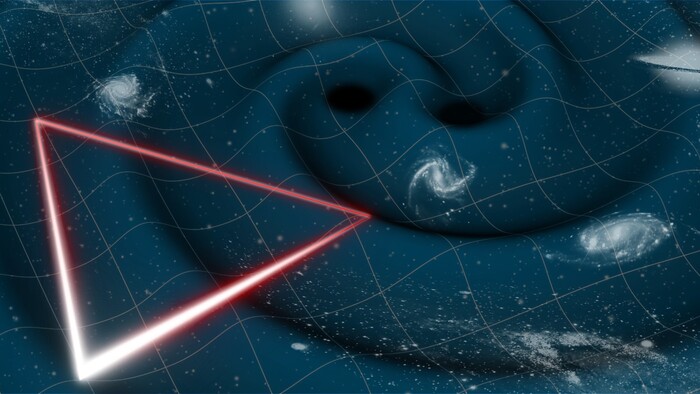The Scientific Program Committee of the European Space Agency (ESA) has formally approved the Laser Interferometer Space Antenna (LISA) mission, which in 2035 will launch three satellites into orbit to search for gravitational waves in space, and whose international consortium also includes SISSA of Trieste.
The step, formally called "adoption", authorizes the construction of instruments and spacecraft, for which the Italian Space Agency will have a fundamental role.
Led by ESA, with the participation of NASA and national space agencies, the mission was made possible by an international consortium of scientists, the LISA Consortium, who contributed in particular to the mission objectives related to fundamental physics.
The LISA satellites will follow the Earth in its orbit around the Sun, forming an equilateral triangle in space, with each side more than six times as long as the distance between the Earth and the moon (2.5 million km).
The configuration will allow a precise exchange of laser beams between the spacecraft, which will reveal, thanks to minute variations in the distance between the satellites, the passage of gravitational waves, caused by cosmic events such as the merger of black holes or supernova explosions.
Enrico Barausse, Fundamental Physics working group of the Lisa Consortium and professor at SISSA, explained that "LISA will observe black holes millions of times heavier than the Sun until cosmic dawn, when the first galaxies formed, helping us to understand the formation of structures in the primordial universe".
LISA will also test the validity of Einstein's theory of General Relativity "with unprecedented accuracy" with "strong gravitational fields and speeds close to that of light", which could "revolutionize our understanding of fundamental physics and cosmology".
Reproduction reserved © Copyright ANSA

